The Scariest Photos In The World: Dark Corners Of Human History Narrated By Image
No Matter What The Subject Of Each Of These Photographs, From Serial Killers And Cannibals To Horrific Human Experiments, The Behind-The-Scenes Adventures Of Each Of These Historical Photographs Are Even More Terrifying Than The Photographs Themselves.
The Scariest Photos In The World, From the earliest days of photography in the mid-nineteenth century to the most shocking photos currently being shared on social media, history is replete with real horror photos than anything, even the most terrifying horror movies. According to the All, That’s Interesting website, the images collected in this article evoke various fears, including crime scenes, horrific experiments on humans, paranormal phenomena, and even cannibalism. While most of these authentic horror images are very annoying at first glance, the behind-the-scenes story of each photo can be anyone’s nightmare.
A clear example is the 1929 Christmas family photo of the Lawson family in Germanton, North Carolina. While in this photo, members of the Lawson family, like any other family, pose for a group photo, the story behind the scenes makes this family photo one of the scariest photos ever to appear on photographic paper. The father of the family, Charles Lawson, bought new clothes for his wife and children so that everyone would be new to this photo. This photo took just a few days before Christmas that year. But none of the Lawson family members knew this would be their last photo, as they were all tragically killed by Charles Lawson on Christmas Day. The mesmerizing image of the Lawson family was just one example. Also, the case of Dylan Poe in Oahu, Hawaii, is one of those horrible photos that never loses its incredible magic.
 Dylan Poe’s last photo before disappearing
Dylan Poe’s last photo before disappearing
Dylan Poe disappeared on February 27, 2015. He told his parents that he wanted to go to the “Haiku Stairs,” a beautiful place known as the “Paradise Stairs,” ideal for mountaineering and hiking. But he was never seen again. But in the last photo, Dylan sent to his parents, a vague image behind him is most likely his killer. However, this person is indistinguishable from the picture. Aside from the stories, some real horror photos require no additional information and can scare any viewer to the core at first glance.
In this category, the dreaded mask of Edward Pisnell, the serial killer of the 1960s nicknamed “Dave Jerzy,” is included, and even looking at the opposite requires courage and bravery. Edward Pisnell was visiting his neighbors on the English island of Jersey during the 1960s. He forcibly entered homes and tortured and sexually abused women and children before killing them. This mysterious assassin was doing all this while not taking off his extraordinarily horrible mask and spikes. The infamous killer continued his horrific crimes for a long time without revealing his identity until he finally passed a red light one day. When officers patrolled his car, they noticed his mask and bracelets in the trunk. Thus, the nightmare of the people of Jarzi was finally over.
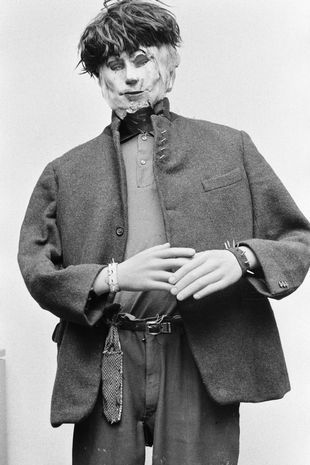
Edward Pinsel is nicknamed “Dave Jerzy.”
Another example of these horrific photos is undoubtedly the photo of Soviet cannibal sellers in 1921. In one of these photos, we see a couple from Samara province selling human organs in the winter of that year. The Soviet Union was plunged into a deadly famine in 1921 that eventually killed nearly 5 million people, and countless people turned to eat human flesh to survive.
Rasputin; A healing saint or demonic creature

Gregory Afimovich Rasputin Novi was a mysterious monk who fascinated everyone with his penetrating and hypnotic look. Rasputin was so enchanted that in the days of Nicholas II, the Tsar of Russia and the last emperor of the Romanov dynasty, and Alexandra Fyodorovna, the queen of Russia, would not do anything without consulting him. But his involvement in government affairs (from the removal of cabinet ministers to even commenting on war strategies) eventually cost him dearly. The members of the Romanov family, who could no longer bear the sabotage of an illiterate Siberian peasant, decided to get rid of him forever. But unaware that the peasant had once foretold that he would be killed by one of the Tsar’s relatives, the Romanov scroll would be tangled.
Rasputin’s death and the black nightmare that began
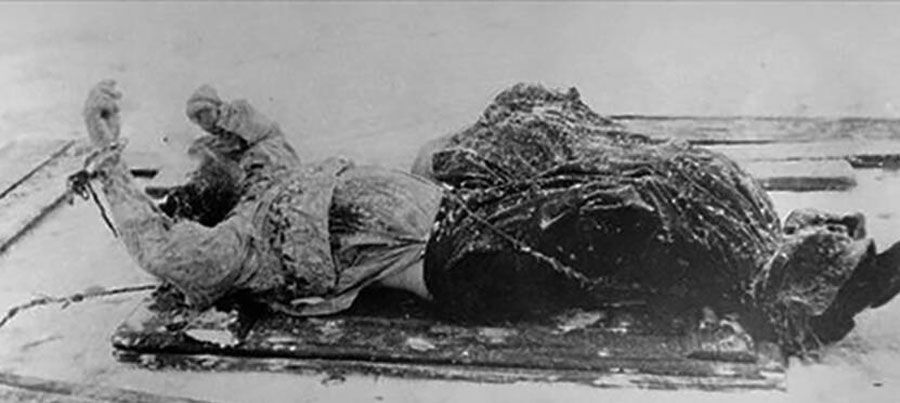
Rasputin’s whole life is shrouded in mystery. Some consider him a healing saint, and some consider him a demonic figure. In addition to his mysterious life, Rasputin went from a monk, and a wandering ascetic to an adviser to the Russian Tsar even had a vague and mysterious death. According to Rasputin’s assassins, Felix Yusupov, the wife of the Tsar’s cousin, and Dmitry Pavlovich, the Tsar’s cousin, they fed Rasputin cyanide, fired at least six bullets, and even beheaded him with iron rods. He was drowned. (It remains to be seen how many times he was wrecked on the way to the car carrying his half-dead body!) have been.
The photo you see shows Rasputin’s body being taken from the river. According to Eduard Radzinsky, a well-known historian of Russian history and biographer of Rasputin, Rasputin’s gangs seem to be threatening the city and the sky. The threat was not hollow and was carried out in less than a year, and the Romanov dynasty went down in history forever. While there is still much controversy over how Rasputin died, most historians believe his assassination changed human history forever.
George Motsky, the crazy bomber
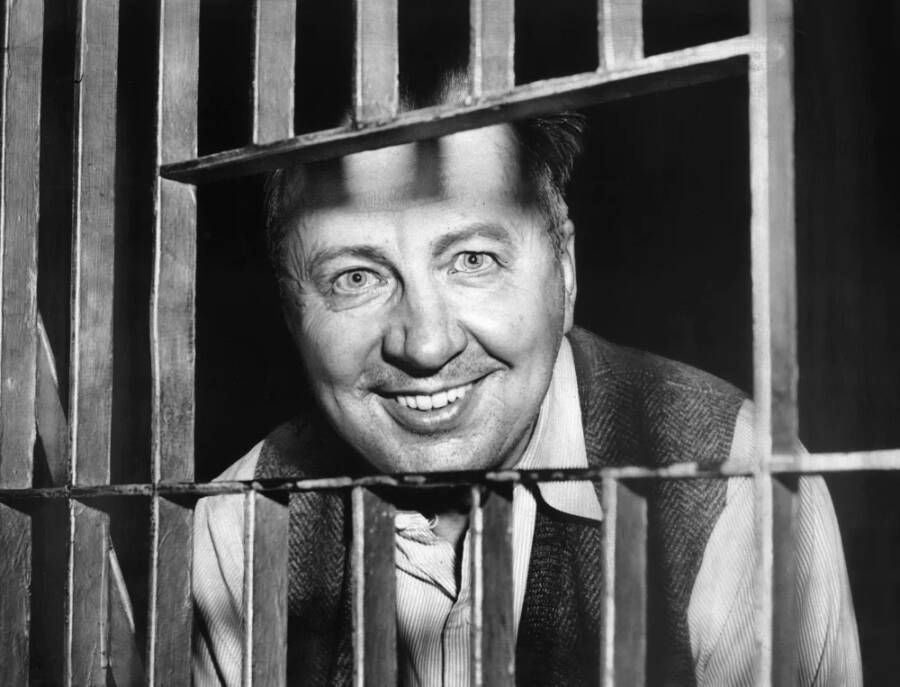
Nicknamed the “Crazy Bomber,” George Netsky planted more than 30 bombs in public places across New York City between 1940 and 1956. At least 15 people were injured during the operation. He buried his bombs in Radio City Hall, New York Public Library, and Pennsylvania Station. George Motsky often wrote mock letters to local newspapers. He was finally arrested in 1957. it took Him into a psychiatric hospital after being found legally insane.
Ed Gain human skin gloves
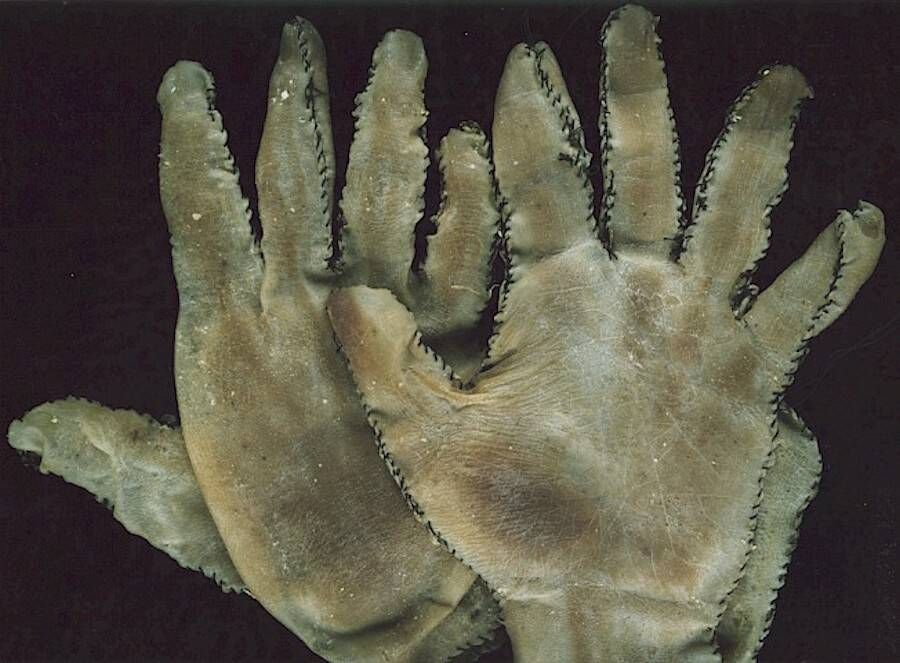
Ed Gain nicknamed the “Plainfield Butcher,” is a notorious murderer known not only for his murders but also for the bizarre things he did with corpses. Ed Gain became so famous in the 1960s that even popular novels such as “Psychology” and “Silence of the Lambs” – both of which later became brilliant film versions – were directly inspired by him. And Ed Gain was a shy man who went to the graves of Plainfield, Wisconsin at night. He would take home corpses that looked just like his mother, and after slaughtering them, he would make all kinds of household items. When the frenzy finally ended with his arrest in 1957, police officers found homemade household items in his home that, at first glance, were extremely skillfully crafted, including chairs, gloves, belts, pants, soup bowls, and lampshades. Ed Gain’s scary booty collection later turned out to be all made of human skin, bones, and skulls. [The Story of Ed Gain; The brutal killer who inspired the film The Silence of the Lambs ]
Ronald MacDonald, the scary clown
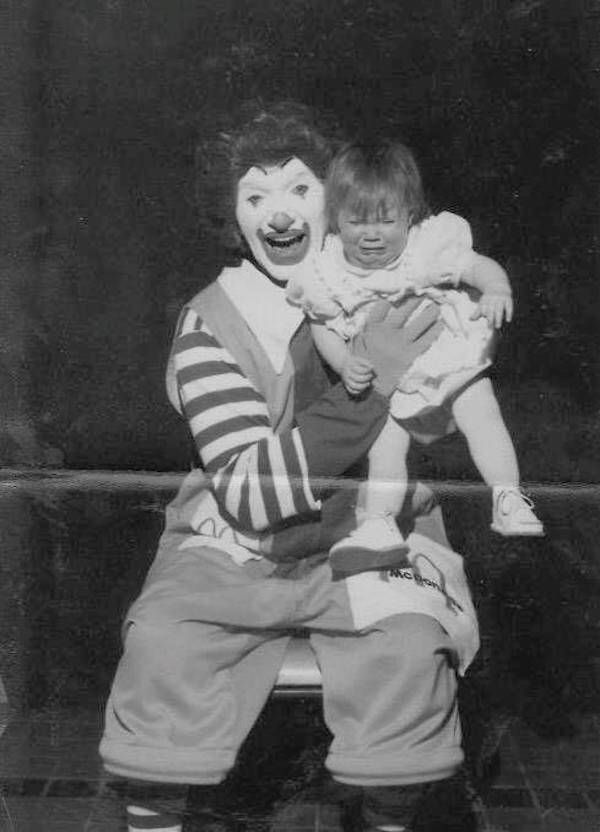
A large percentage of people are afraid of clowns, so it is no surprise that a child in the hands of Ronald MacDonald cries like this. However, the Ronald MacDonald you see in this photo is not the original 1963 version of the McDonald’s restaurant advertising clown, but the 1970s version. (The 1963 version was McDonald’s scariest clown!) However, this particular clown has something in his eyes that can instill fear in anyone.
Duchenne du Bologna experiments
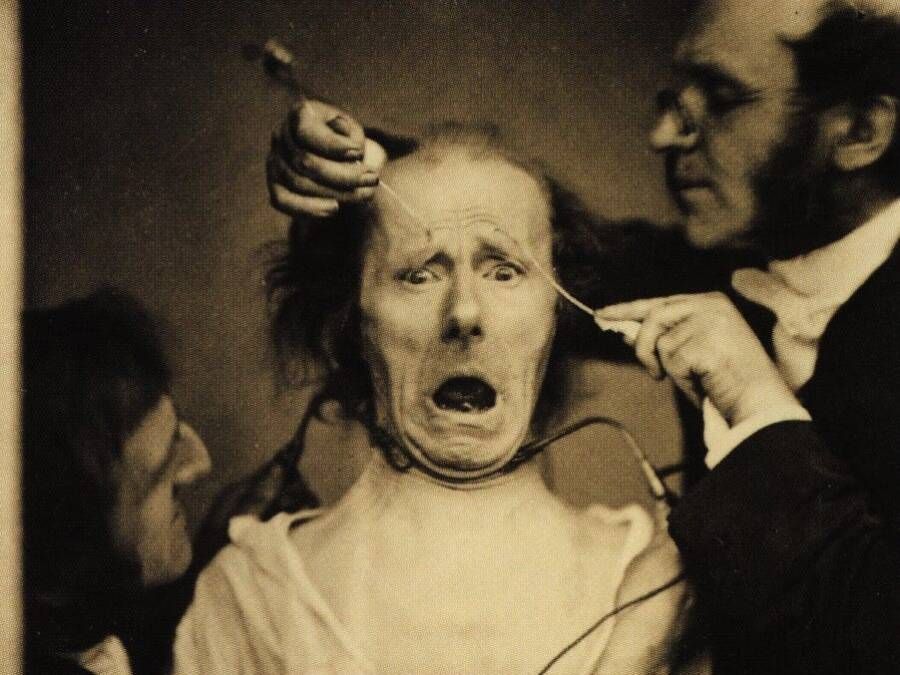
Between 1854 and 1856, the French neurologist Guillaume Benjamin Amand Duchenne de Bologna conducted electrophysiological studies to evaluate how facial muscles form facial expressions. Although this famous scientist’s intention was good, his methods were not like that at all. Duchenne de Bologna gave the poor patient an electric shock for these tests.
The cell where the defendants in the witch trials in Salem were imprisoned
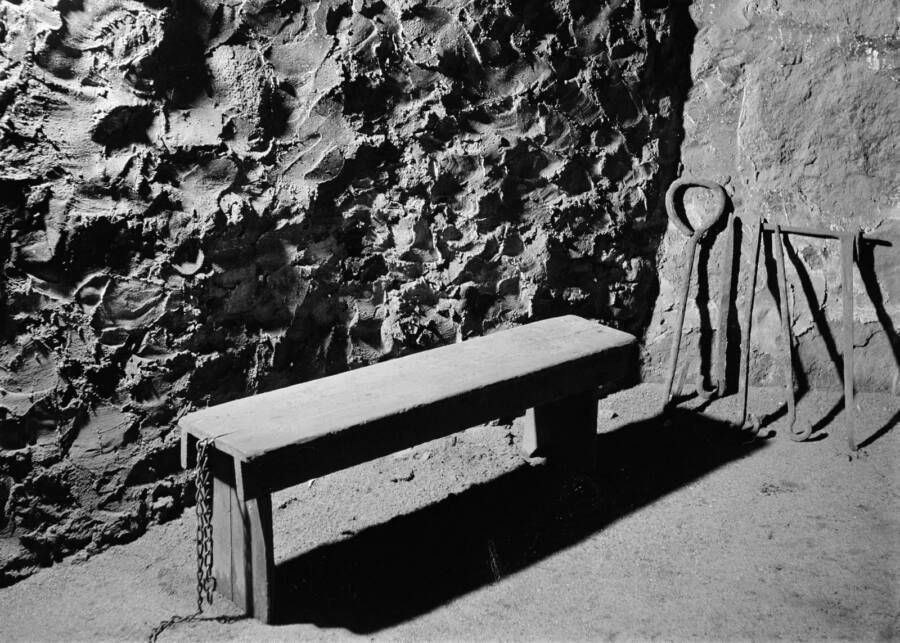
The cell you see is where the defendants in the Salem Witch Trials are detained. In the cells, the accused witches spent the last moments of their lives before being executed. Between 1692 and 1693, more than 200 people were convicted in the Salem court; Including 19 people who were sentenced to death for witchcraft.
Horrible experiments Unit 731

What you see in the picture is one of the countless victims who died between 1935 and 1945 during inhumane experiments by doctors of the Imperial Japanese Army. Evil Doctors, Unit 731, performed horrific experiments on prisoners, most of whom were Chinese. Perform Most of these tests without medication or anesthesia.
Unit 731 experiments included almost every type of experiment, from amputation to amputation of parts of the brain, lungs, liver, biopsies, and deliberate infection with a variety of bacteria and viruses, biological warfare experiments on living subjects, and even forced rape and pregnancy tests—transmission of some diseases from mother to baby, especially syphilis. The poor woman you see in the picture is infected with various germs to be examined later in life by examining the effects of the disease on her organs.
Karl Tanzler’s mummified lover
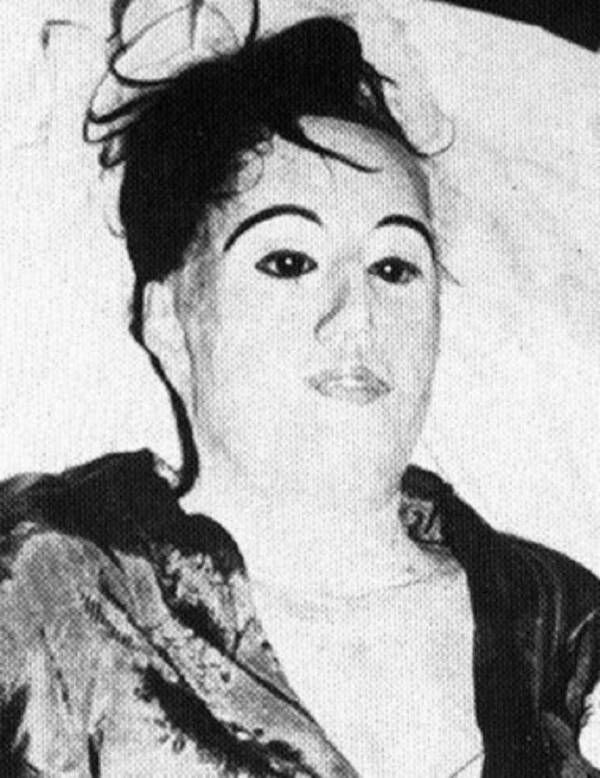
When Maria Elena Milagro de Hughes first entered Dr. Karl Tanzler’s office, she was determined to cure her tuberculosis. But that was not the end of the story because the doctor became so attached to him. So much so that he did not leave him even after his death. It is where the story takes on a terrifying hue. When Maria died in 1931, Karl Tanzler stole her body from her tomb. She took the corpse home using wax, clothes, silk, and other items to turn it into a life-size doll. Thus, after her death, poor Maria was Dr. Tanzler’s wife and roommate for nine years, finally revealed the secret of this crazy doctor.
A corpse from the Toraja death rite
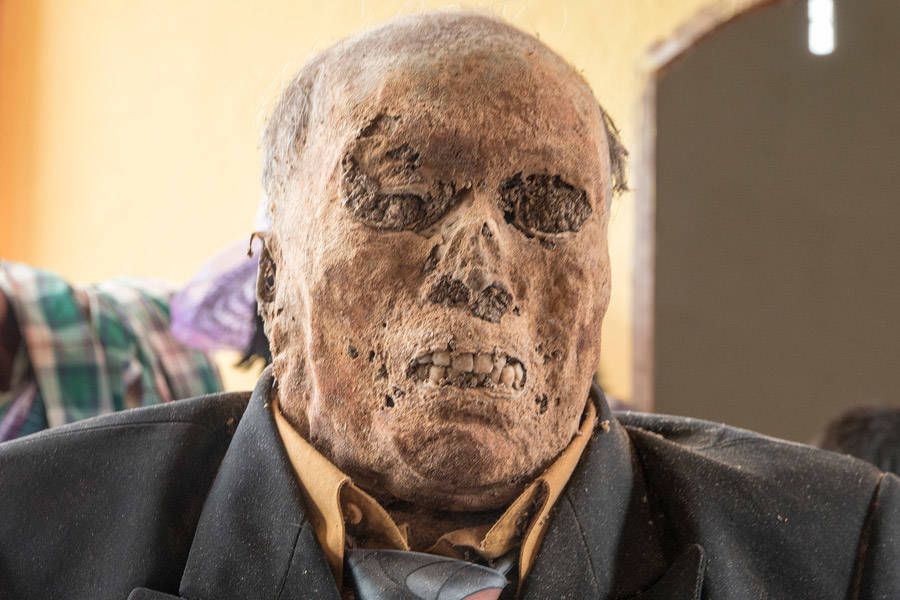
At Turaja’s death on the Indonesian island of Sulawesi, the body remains at home as relatives of the deceased plan to bury it. During this period, the deceased is received like the living and is clothed in clothes and even sunglasses or a hat. Sometimes the dead may revisit the living to clean the grave. The body you see in the photo is a guest of his family for a few days to return to his eternal home. [To see more pictures from an ancient ritual Tvraja series, here check.]
The deadly fall of Kate Sapsford

While the story of the photos and videos of the fatal crash of Afghan citizens from the plane has not yet been erased from the public mind, it is interesting to know that a similar tragic death took place in Australia years ago. It was February 22, 1970, when 14-year-old Kate Sapsford ran away from her boarding school in Sydney. He decided to go on an adventurous trip to Japan by sitting inside the aircraft compartment. But Kate did not know that the chamber would open to collect the wheels. Eventually, this causes the poor kit to fall from a height of 60 meters. John Gilpin, a photographer who happened to be photographing the plane that day, later found out when the photos appeared in the dark. A few days later, he sold this fantastic photo to Life magazine, which immediately made its way to the newsstands and became one of the most famous photos in the world.
One of the survivors of the Indianapolis shipwreck
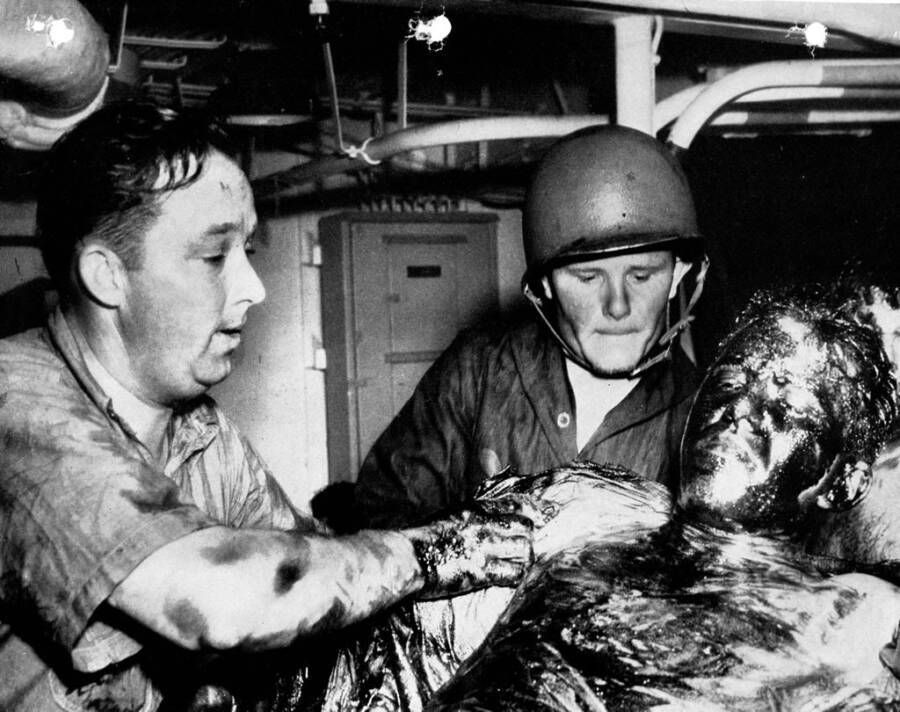
The Indianapolis was targeted by a Japanese submarine a few days after it delivered uranium and other components of the atomic bomb that was to explode on the people of Hiroshima to the US Air Force. The accident occurred on July 30, 1945, drowning about 1,000 people aboard the ship in the Philippine Sea. Of course, this was not the end of the story. When the ship’s fuel exploded, the crew of the burning ship jumped from the deck into the sea, where they were eaten alive by hungry sharks. Those who were more fortunate died of drowning or drowned while wandering in the ocean. Finally, four days after the accident, rescue teams could rescue 316 sailors who survived the accident.
Spontaneous combustion of the esophagus
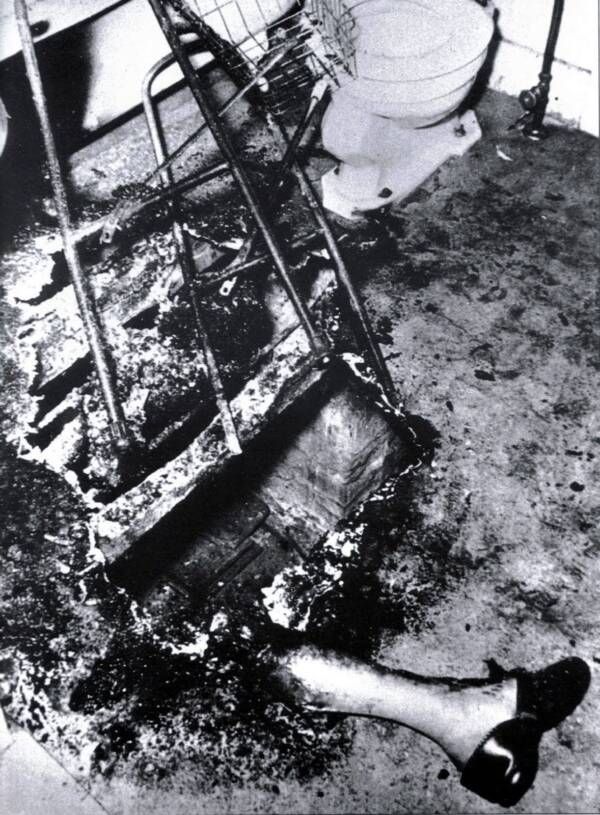
On the morning of July 2, 1951, in St. Petersburg, Florida, Mary Razer’s landlord went to the older woman’s apartment to deliver a telegram. But he noticed the unusual heat as soon as he arrived. He soon opened the door and was confronted with the remains of Mary Razer, a pile of ashes dumped on her burnt chair. Only part of Mary Razer’s body was left, as well as the skull. Officers who later arrived at the scene could not determine the cause of the fire. There were no signs of fire anywhere in the apartment. The case was subsequently referred to the FBI. The FBI investigators concluded that Mary Razer burned herself like a candle wick in the fire and constantly fed her body fat so that nothing was left of her body. But still, no one knew how the fire started.
The last killer victim of charming girls
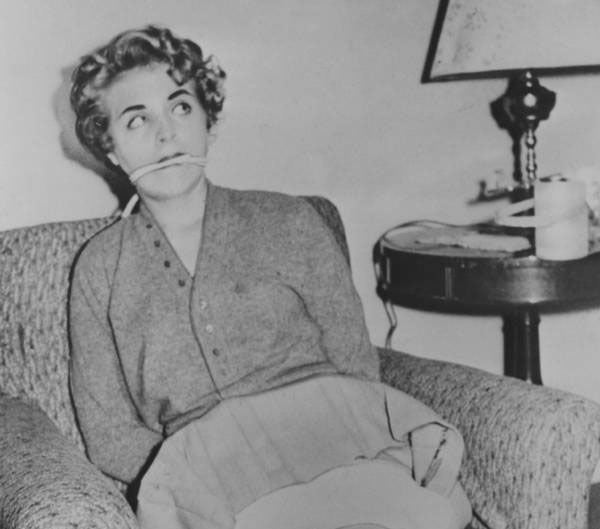
Harvey Goldman took this photo for his collection before taking 19-year-old Judy Dahl to the Mojave Desert to suffocate. The serial killer became famous in the 1950s for hunting attractive girls. She usually posed as a fashion photographer and said she had to photograph beautiful and well-dressed women for her collection. Her subjects mainly were novice Hollywood actresses who never imagined taking a simple photo in such narrow spaces. Unaware that Harvey Goldman had taken his own life after the shot.
Edward Pencil Niqab, “Jersey Giant”

It was not until the 1960s that Edward Pisnell inflicted unbridled fear on the people of Jersey Island in the English Channel. He raped at least 13 people and harassed many to the point of death. Edward Pinsel always wore a terrible mask during these heinous crimes. But the scariest part of the story is that he was a family man and a kind father who even dressed up as Santa Claus at Christmas and distributed candy and presents to small children for the rest of the world.
Ted Bundy Tools
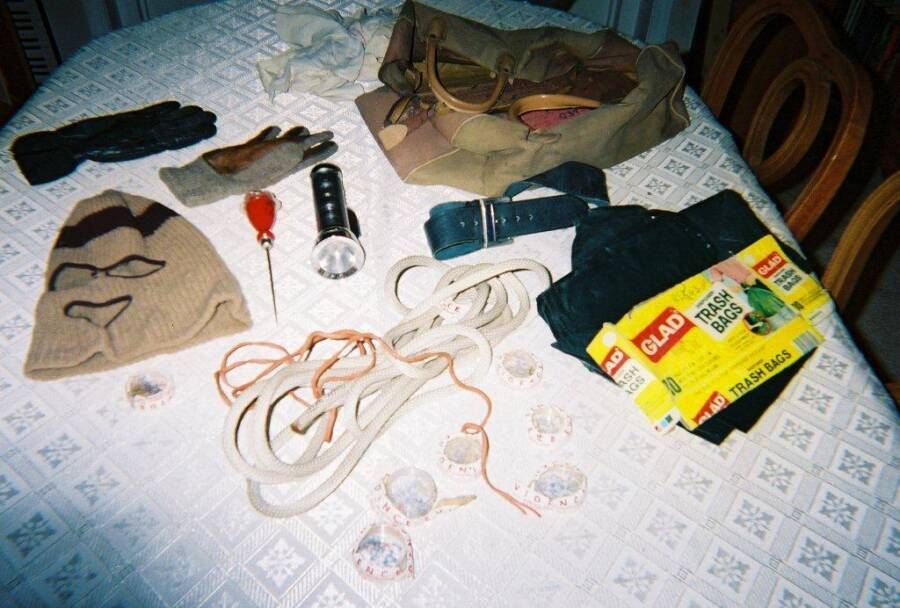
On August 21, 1975, Salt Lake City police spotted a Volkswagen Silver Frog driving out of town with its headlights off. When the police officer signaled him to stop, the driver chose not to stop. The suspect was eventually arrested, and a suspicious consignment was found in the trunk of his car. The driver of the vehicle was Ted Bundy, who was later charged with kidnapping Carol Darunch. Carol is one of the few lucky women who escaped from Ted Bundy and later testified against him in court. What you see in the picture are the tools that Ted Bundy used to harass, rape, torture, and then kill victims. [ Ted Bundy Riddle; What was going on in the mind of the most notorious murderer in history? ]
Vendors of human organs during the 1921 famine in Russia
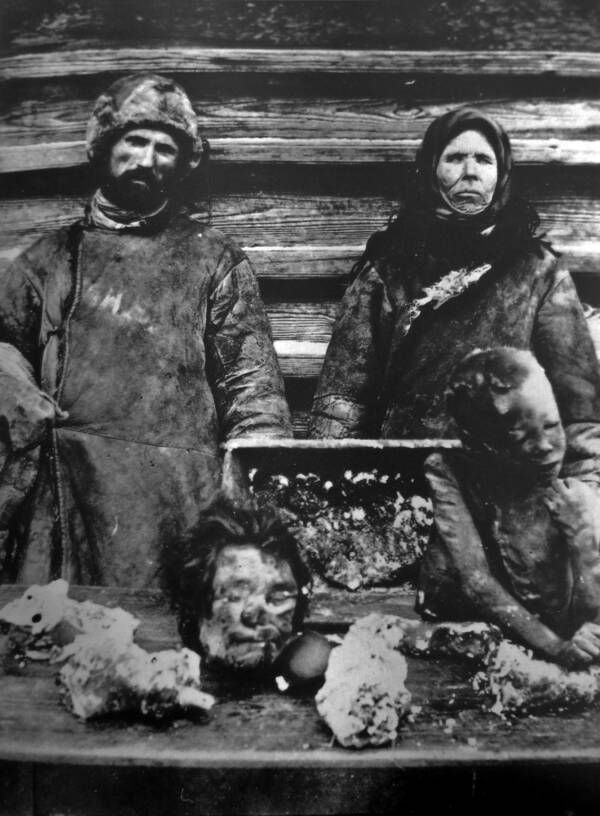
In this photo, you see a couple from Samara province selling human organs in a market. I Took This photo in the winter of 1921. The Soviet Union fell into a devastating famine and starvation that eventually killed more than 5 million people. In those circumstances, many people turned to eat human flesh to survive.
A mass shooter selfie that led to his trial

On July 20, 2012, James Holmes attacked a movie theater in Aurora, Colorado, showing “The Dark Knight Rises” at midnight. He killed 12 people and wounded 70 others in the blind attack. Eventually, police stopped him with tear gas grenades. Holmes was arrested on the spot and later found on the cell phone at his home. The same photo was later used in court as evidence against him. The unrestrained young man was sentenced to life in prison in 2015 at the age of 27. Interestingly, before this mass shooting, his only criminal record was speeding.
A woman who was imprisoned for 25 years
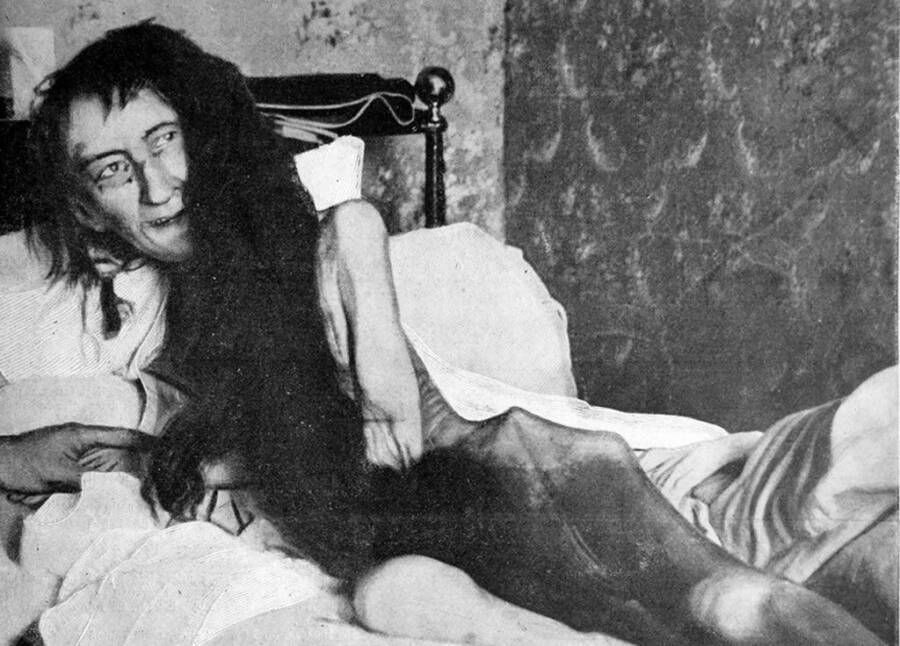
In 1901, the French police received a strange report from an unknown person. According to this unknown person, a woman has been taken prisoner in an aristocratic house in Poitiers for a long time. Police officers rushed to the scene and finally saw the surprise of a woman with fragile skin and a weight of 25 kg. This woman, who had long been kept in a state of misery, was called Blanche Munier. He was imprisoned in a room for 25 years against his will by his oppressive mother.
Seeing UFOs in Salem, 1952

No comment has been made on this photo, taken on August 3, 1952, of Sky Salem, Massachusetts. Shell Alpert, a 21-year-old Coast Guard officer, took this photo, and as you can see, four mysterious objects can be seen in the sky. This photo is still one of the most famous UFO photos globally, now kept as a historical document in the Library of Congress.
The shadow of a man in Hiroshima shortly after being hit by an atomic bomb
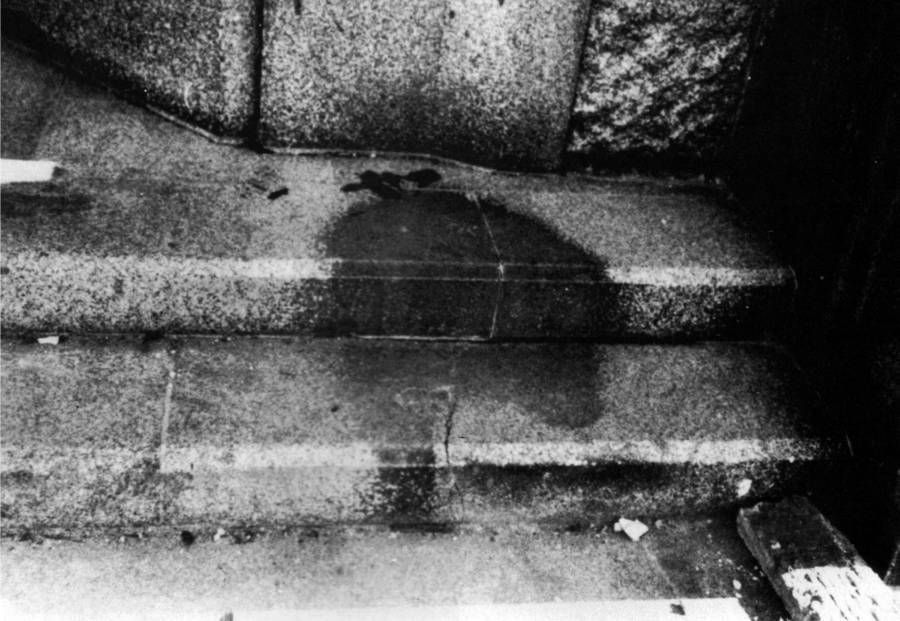
When the US military dropped the “little boy” atomic bomb on Hiroshima, Japan, devastating the city on August 6, 1945, many of the 80,000 victims were left in the shadows. The bomb exploded at a temperature of over 4,000 degrees, turning everything from buildings to people to ashes in a fraction of a second. What you see in the picture is a person sitting on the stairs when the atomic bomb hit but soon turned into a pile of ashes.
Scout defense maneuvers
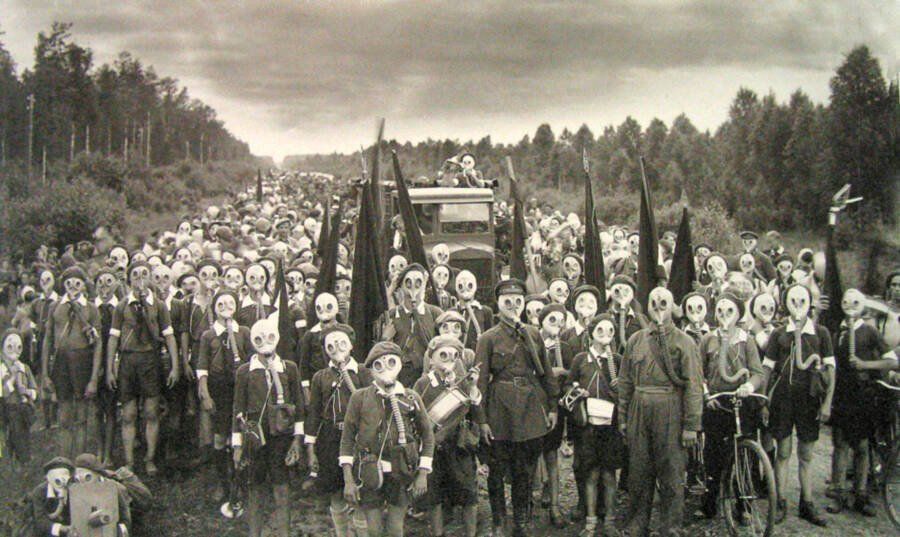
Known as the “Scout Defense,” this stunning image was taken in 1937 by a Russian photographer named Victor Bola. While the group’s gas masks create a terrifying scene, the men, women, and children in the photo are members of the Soviet vanguard during a military exercise in Leningrad. While bloody events took place in the region a few years later during World War II, even before the war under Joseph Stalin, the Soviet Union was going through a dark period of suffocation, terror, and oppression.
Funeral services for members of the Dietlov Group
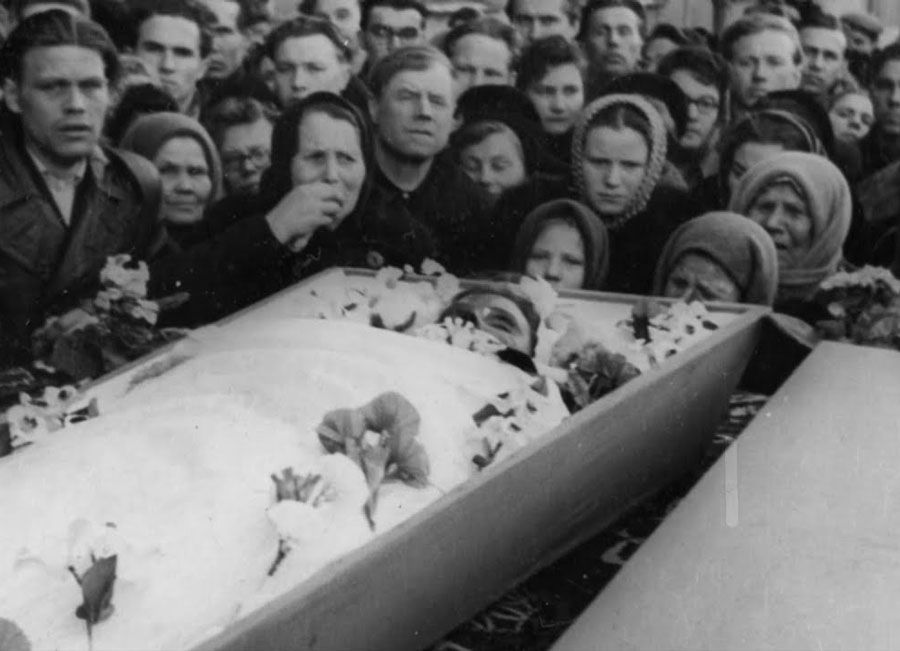
What you see in the photo is the coffin of Zinaida Komogurova, a member of the Ditlov group. In January 1959, nine students from the Ural Polytechnic Institute went on an exploratory trip to the Ural Mountains. Sieloff and his friends set out to climb Mount Ortorten in the northern Urals, But that never happened, and none of the band members were seen alive again. A few weeks after the incident, and there was no news of Dietlov’s group, the concerned families demanded that search and rescue teams be sent to the scene. With the discovery of the bodies of Dietloff and his friends, the story took on a terrifying dimension to become one of the most obscure mysteries of the twentieth century.
One of the victims of the Ditlov crossing incident
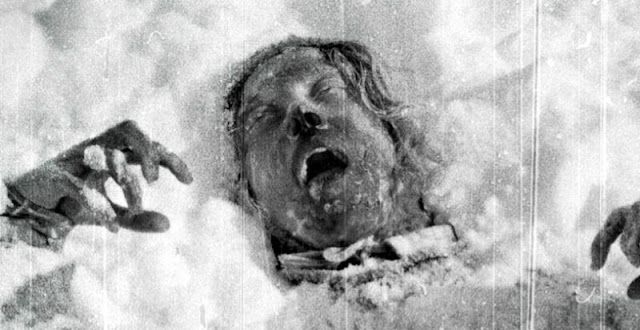
One by one, search teams found Dietlov’s bodies in a more horrific condition. Some members of the group wore nothing but underwear despite the bone-chilling cold. All members of the group had died from severe frostbite. But the discovery of half-naked bodies in that deadly cold was not the strangest discovery by search agents. Two months later, as the snow melted, more bodies were found to absorb the terrifying dye. Surprisingly, the officers found the bodies with their eyes gouged out and broke their ribs. Also, cut The tongue of one of the members of the group. The search continued to make the story even more bizarre. Of the four people found last, two peeps had traces of radioactive radiation on their clothes. The photo shows the body of the group’s leader, Igor Aleksievich Ditlov, who was in a better condition than his comrades. Sieloff, who died of frostbite, had only a few cuts and minor bruises. He also had many broken teeth and blood on his lips. [New Theory of the Dietlov Pass Riddle]
The mass suicide of members of the Gate of Heaven cult

The members of the “Paradise Gate” cult believed that it was the actual destination of another world and that they could travel there to the next stage of human evolution. Thus, 39 members of this sect committed mass suicide on March 26, 1997, in California. The leader of this mysterious cult was که که who claimed that the spaceship that arrives after comrade Hill Boop would take them with him to the Promised Land, which is located on the utopia planets.
Appellate believers and simple-hearted followers who adored the cult leader also followed his instructions carefully. On that fateful day in March, 39 members of the cult drank sleeping pills, along with purée and vodka. Each member of the group carried a bag over their head to ensure suffocation. Appellate himself was the 37th person to die. When the bodies of the cult members were found a few days later, everyone saw that the whole group was wearing Nike sneakers and armbands with the cult name.
The skeleton of Hannelore Schmatz on top of Mount Everest
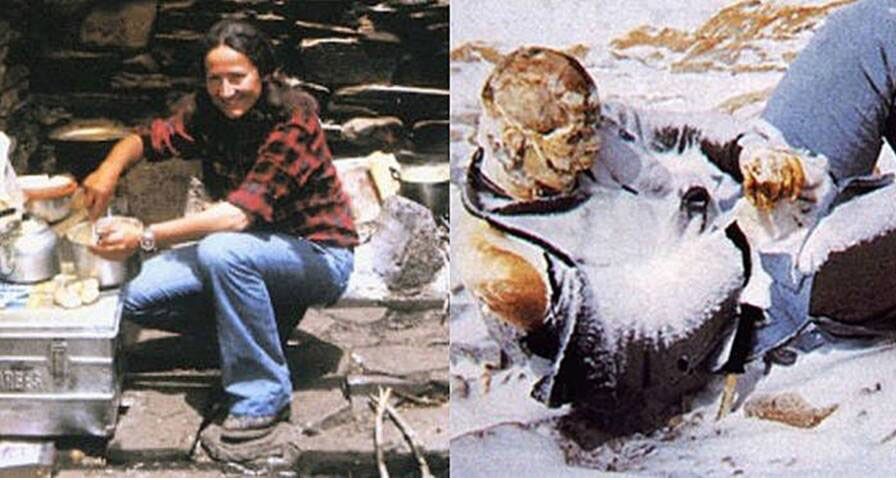
German climber Hannelore Schmatz was the fourth woman to climb Mount Everest. Before her death, she set another record and became the first woman to die on Mount Everest. The German mountaineer and his wife embarked on a difficult exploratory journey in 1979 with high hopes. They had trouble returning to the summit after successfully climbing the peak. Eventually, Schmatz, weakened by the trip, succumbed to fatigue and cold. Now, years after Schmidtz’s death, his body can still be seen lying on the mountain’s slopes, leaning on his backpack. The wind has disturbed the poor woman’s hair, and her eyes are still wide open.
Other climbers on the way to his body said they sometimes felt his eyes follow them. Later in 1981, a group of Nepalese mountaineers decided to retrieve the body of a German woman from Everest but were unsuccessful, and even one of the group members fell on the road and lost his life. Hannelore Schmatz’s body remained the same until a few years later, and a strong wind blew her into the Kangsung Glacier or the eastern face of Everest so that no mountaineer could see her again.
A mental hospital in the early twentieth century
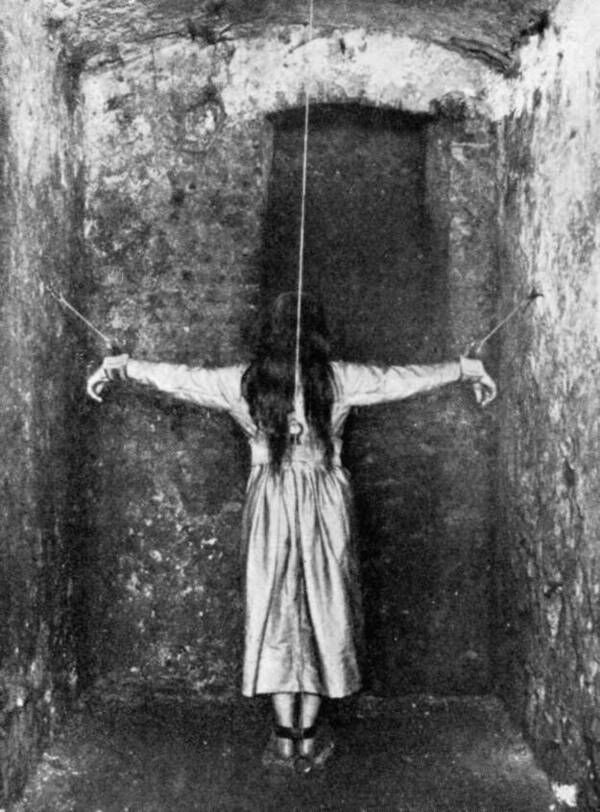
Fewer photographs are more disturbing than the horrific photographs taken of the sanatoriums and psychiatric hospitals of decades and centuries past. The person you see in the picture is one of the countless patients imprisoned in a psychiatric hospital in France in the early twentieth century. It is not known what mental illness this unfortunate patient had. At that time, in the late nineteenth and early twentieth centuries, people with problems ranging from depression and shock (post-traumatic stress disorder) to schizophrenia and learning disabilities could get out of these strange medical centers and spend the rest of their lives. They were imprisoned in this dark corner away from the community. Unfortunately, horrible things were happening behind closed doors. Because of this, we may never know what pain and suffering these poor people have endured in the old psychiatric institutions. [The Scariest Psychiatric Hospitals of the Nineteenth Century ]
The American Buffalo Massacre
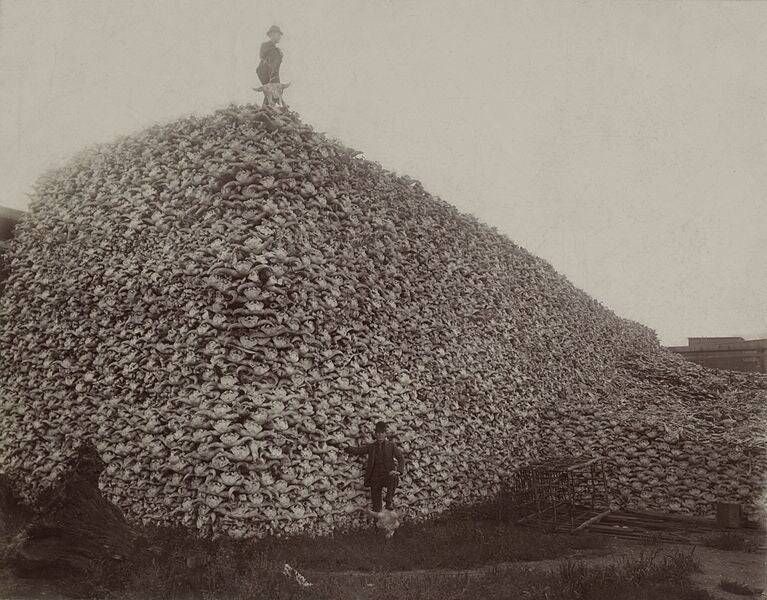
Once a symbol of the endless opportunities for American citizens in the West, Buffaloes have become a symbol of bitter realities. Before the arrival of European settlers in North America, at least 30 million buffaloes lived in the West, but between 1800 and 1900, that number rose to 325. This terrifying historic photograph, taken in 1892 in Michigan, shows a mountain of buffalo skulls that are to be used for purposes such as refined sugar, fertilizer, and the production of porcelain utensils. The most disturbing fact about the brutal slaughter of buffaloes is that the US government ordered the military to slaughter buffaloes only to deprive the natives of natural resources.
Anheliz Michel
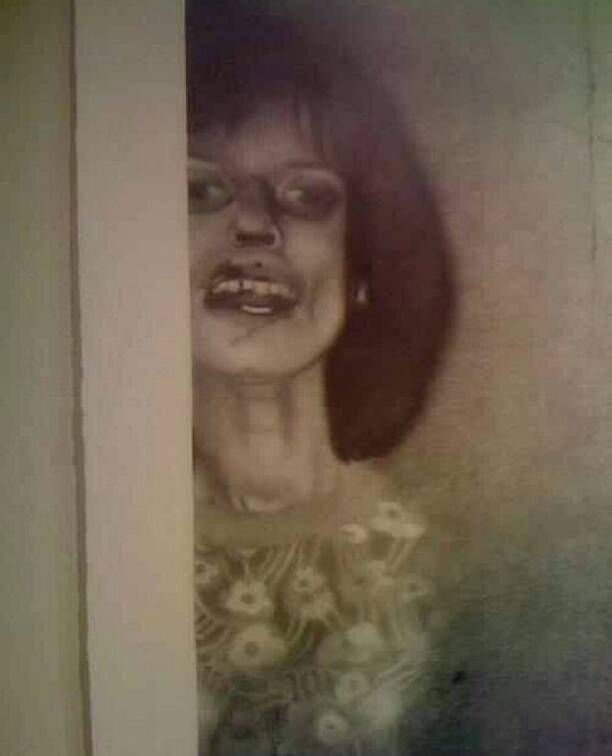
Anheliz Michel was a devout Catholic who lived everyday life with her parents in West Germany in the late 1960s. But soon after, he was constantly fainting at school, exhibiting strange behaviors such as seizures, hallucinations, eating spiders, and even eating his urine. Michelle claimed to have been possessed by the devil, and her parents soon concluded. They enlisted the help of a Catholic priest, who performed a total of 67 sexual assaults on the poor girl. But none of it cured her pain until Anhellis died at the age of 23 from severe malnutrition. He died in 1967, weighing only about 31 kilograms. Her story was so terrifying that the movie “Emily Rose (2015)” was finally made inspired by the events of her life.
A student’s dream
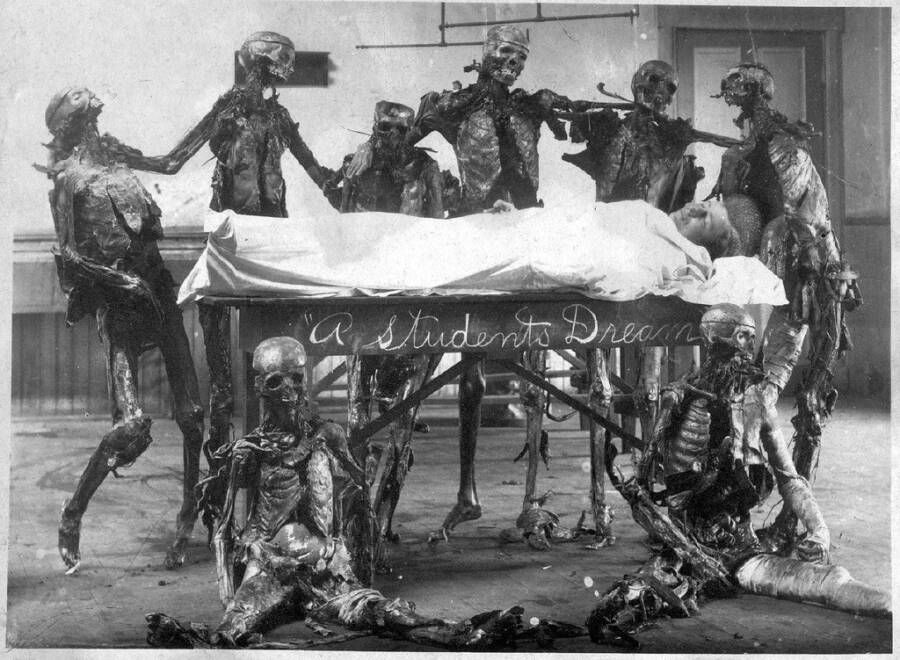
In the early nineteenth century, medical students often abused their privilege and took photographs of corpses during autopsy classes. If John Harley Warner and James M. “Special access to corpses represents a transgression of social, moral, and emotional standards,” wrote Adamsonson, author of “Autopsy: Photographs of the American Medical Transition of 1830-1930.” However, as the quote on the table in this photo explains, a student’s dream was to replace himself with corpses, which would pose with him this time. While it is not clear how this humorous student could arrange the bodies, his photograph more than a century later still brings a smile to the viewer’s lips.
Matik killer message at the murder scene
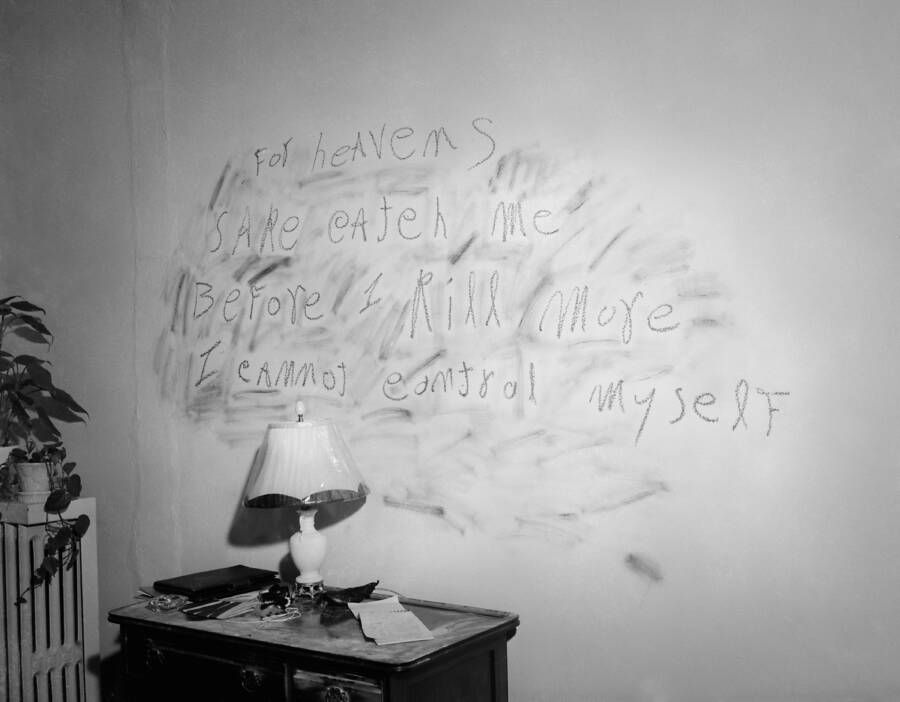
On December 10, 1945, police entered the apartment of Francis Brown and found the body of a 32-year-old woman. The bloody corpse of a woman had fallen into a corner, and a knife inserted into her back. A strange message is written on the wall of the poor woman’s room with lipstick: “God willing, take me before I kill more [people]. “I lost control.” William Hernes, known as the “Matick Killer,” killed three other women before being arrested in 1946. Herns confessed to all the murders before being convicted but later reiterated that he forcibly acknowledged. Thus, some still think that the natural killer may never have been arrested.
Photography of ghosts

The photo you see is one of the most famous photos discovered by the curator of the National Media Museum (in Bradford, England) in an antique bookstore. This photo was taken by a renowned psychic mediator named William Hope. Such photographs, known as “soul photography,” date from the 1900s. Took Such illustrations with precision and skill that even celebrities such as the famous author Sir Arthur Conan Doyle (creator of Sherlock Holmes and one of the greats of crime literature) were drawn so that the ghosts of these photographs would not be confirmed.
The last photo of a tourist eaten by a cannibal tribe
In the middle of this photo, Michael Rockefeller was the son of Nelson Rockefeller, the governor of New York, and later vice president of state under Gerald Ford. He was born into a prosperous family and grew up in luxury. But when he traveled to Papua New Guinea in the Pacific in the early 1960s, he faced a bitter fate. Many members of the Asmat tribe (known for cannibalism) believe that he was beheaded and eaten.
The frozen body of John Hartnell, a nineteenth-century sailor
It is the body of John Hartnell, a young sailor who died in 1845, along with more than 100 other members of Franklin’s voyage of discovery. The trip was an attempt to find an inaccessible northwest passage. But instead, it became one of the most horrific maritime disasters of the nineteenth century. After the sinking of the two ships of this voyage in the North, more than 130 of the passengers of the two boats froze or died of poisoning or starvation. Many of the ship’s crew ate cannibals to survive.
While the bodies of many group members were later found, some bodies remained missing for years. In 1986, a team of explorers discovered the frozen bodies of three sailors, John Hartnell, John Thorington, and William Bryan, on Beach Island in Arctic Canada. After exhumation, the bodies carefully examine to determine the cause of death, acute lead poisoning (possibly due to poor quality cans). [ History of Franklin’s voyage of discovery; A journey that did not end ]
Old Charlie Smith Clown
Here you see the clown Charlie Smith in the 1930s who has an evil appearance. Fortunately, he is just a clown and a professional showman, seemingly doing his best to calm a terrified toddler. Both this photo and this famous clown belong to a time when there was no news of satanic clowns and murderers, and the clowns’ fear of the general public had not yet risen with a multitude of TV and movie productions and horror novels.
Jan Wiley, the savage girl

The little girl in this 1970s photo is Jen Wiley of California, known as the “Wild Girl.” He, who is 13 years old here, can hardly walk due to the abuses of his ruthless father. Wiley’s father, who thought his daughter was developmentally disabled, abused her. Wiley’s father often kept him in a restraining vest or toileting him to stay up all day. When the little girl cried or did something her father did not like, Wiley’s father growled like a dog and showed him his teeth.
In such a frightening atmosphere, poor Wiley never learned to walk or talk. After this, Jen Wiley pursued a new life in recovery institutions. Since then, she has tried to lead a carefree life away from the hustle and bustle of the media and even researchers who were interested in studying her. As a result, it is unknown at this time what he will do after leaving the post.
The last moments of Regina K. Walters’ life

Robert Ben Rhodes, known as the “truck stop killer,” may have killed more than 50 innocent women and girls while traveling in commercial trucks across the United States. His heinous murders took place between 1970 and 1980. Rhodes often chose his victims among prostitutes and street women and tortured them for weeks or months before killing them. Perhaps his most horrific murder is what is thought to be his last, just before the dreaded killer Regina Ki. Walters, who killed a 14-year-old in a barn in Illinois in 1990, took a series of photos of him revealing the fear of a helpless girl. Police found the picture in his home a few months after Rhodes was arrested.
One of Anatoly Muscovy’s scary dolls
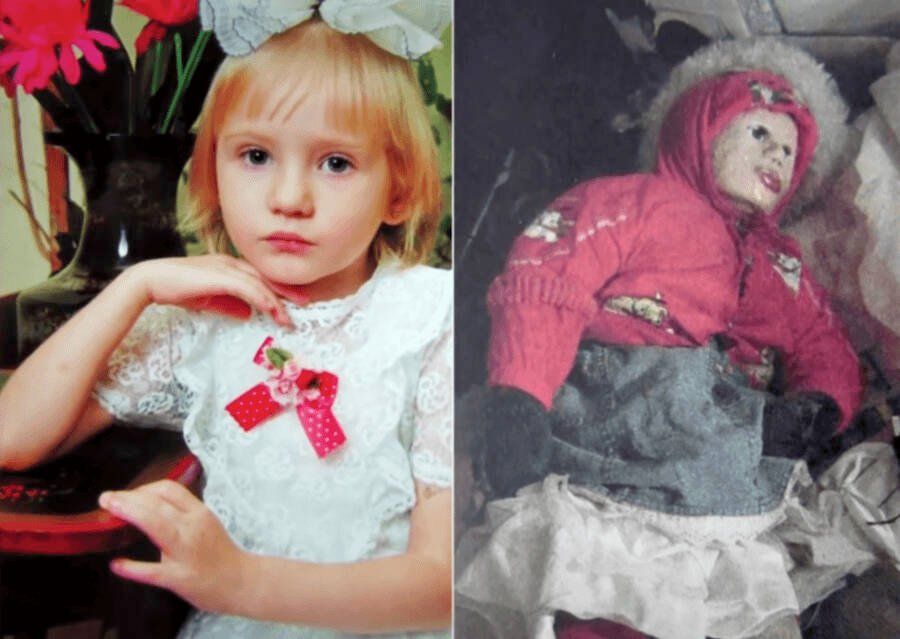
Anatoly Muscovin was in appearance a respectable and sublime man. He was highly educated, fluent in 13 languages, a historian, and co-author of several Russian publications. But it was not until 2011 that police officers discovered that he was stealing graves in his spare time. During a search of the home of Muscovite, who lived with his parents, police found 29 bodies, ages 3 to 25. But the most horrible discovery was that he turned the bodies of poor girls into life-size dolls by covering them with cloth and drying them. Muscovite had even placed a musical box in the chest of one of the girls.
Mutant pig in Chernobyl
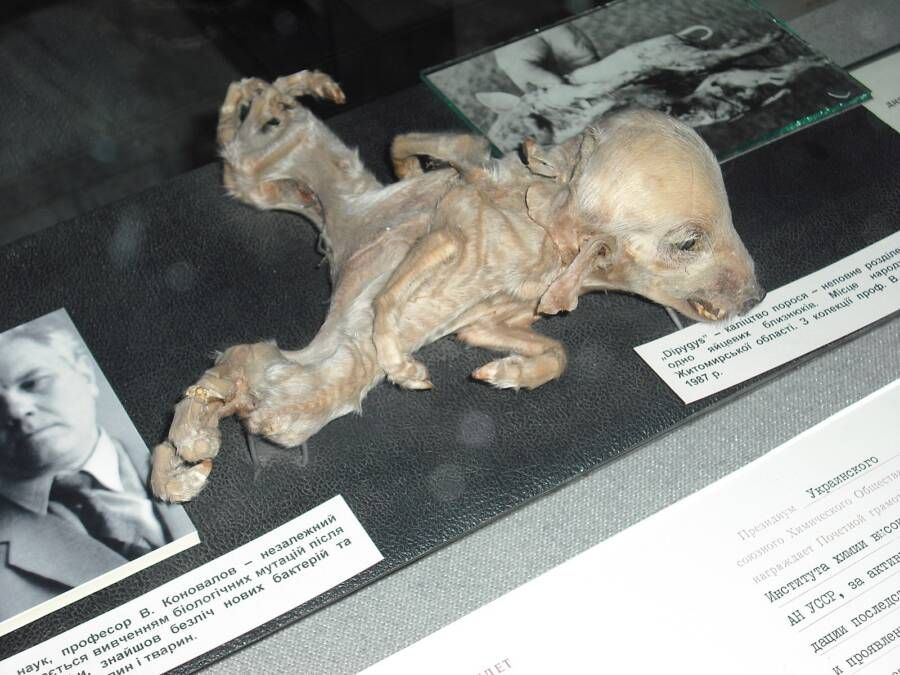
In the early hours of April 26, 1986, an accident occurred at the Chernobyl power plant near Pripyat, which became the worst civilian nuclear accident in history. However, now it seems that the area is slowly becoming a good place for wildlife to live again. But the animals that inhabited the site in the late 1980s were less fortunate. The baby pig you see now housed in the National Chernobyl Museum in Ukraine in Kyiv is a prime example of the region’s miserable situation.
Known as the “mutant piglet,” the creature is almost 40 years after the Chernobyl disaster, a reminder of what happened at a nuclear power plant. The animal was infected with Deepigs due to atomic radiation, which caused the body to split, and a duplicate of organs, such as extra legs or arms, formed in the body.
The most beautiful suicide in the world
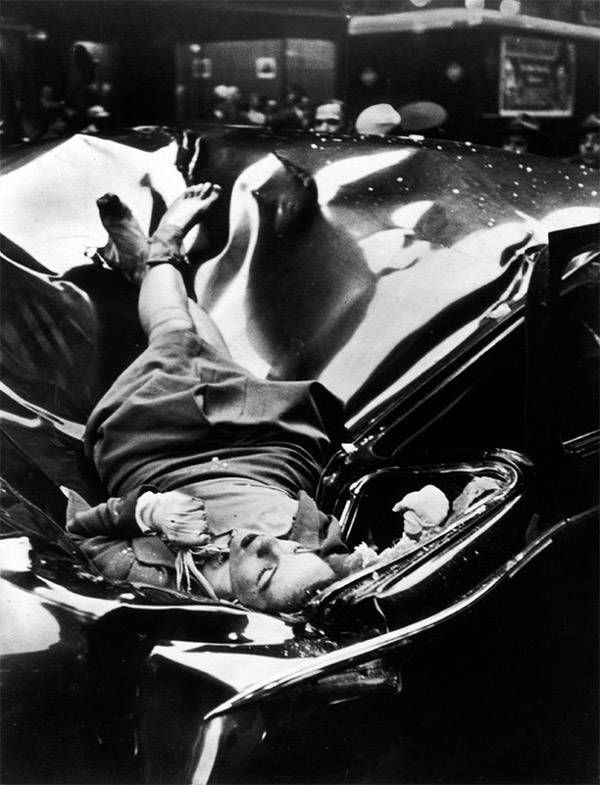
on May 1, 1947, when 23-year-old Evelyn McHale jumped from the observation deck on the 86th floor of the New York Empire building. Robert was a photography student who took this photo immediately after his suicide. Although this photo became famous worldwide, McHale wished that no one would see his body. Despite his wishes, Time magazine published the photo, calling it “the most beautiful suicide” and used it by American avant-garde artist Andy Warhol in one of his designs. While McHale’s photograph is still popular decades after his suicide, no one still knows his motive for committing suicide. We may never know why an attractive and seemingly happy woman who is only one month away from her wedding has ended her life.
Death of Vladimir Kamarov
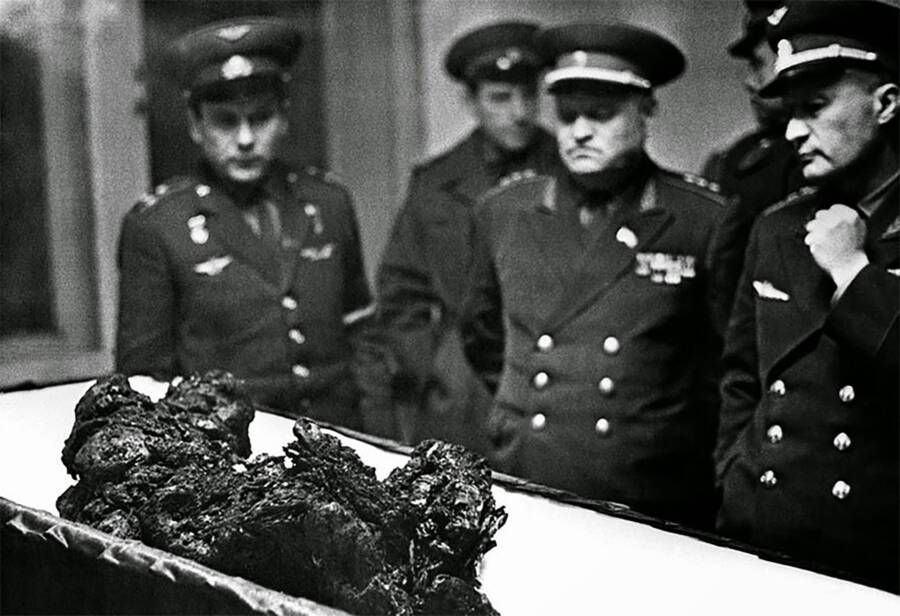
When Soviet astronaut Vladimir Kamarov was selected as the pilot of the Soyuz-1 mission on April 23, 1967, he knew he was doomed. The spacecraft had a technical defect during the test, and it was clear that the man to be boarded would not return alive. Although the dangers of this mission were obvious, no one was willing to back down, and no one wanted to disappoint the Soviet authorities. Even Komarov did not back down, knowing that the next pilot, astronaut Yuri Gagarin, would be sentenced to death if he did not carry out the mission.
During the mission and re-entry into the Earth’s atmosphere, Kamarov’s parachute suffered a technical failure. Due to the extremely high entry speed into the atmosphere, the Soyuz spacecraft caught fire to roast the brave living astronaut. In doing so, Komarov became the first human to die during space flight. Even before his fateful flight, Kamarov was so sure that he would die that he even wanted his coffin to be reopened so that his superiors could see what had happened to him with their wrong orders. To this day, this horrific historical photograph taken from the remains of his body is a reminder of his tragic story.
Scary pictures of Venus mummies
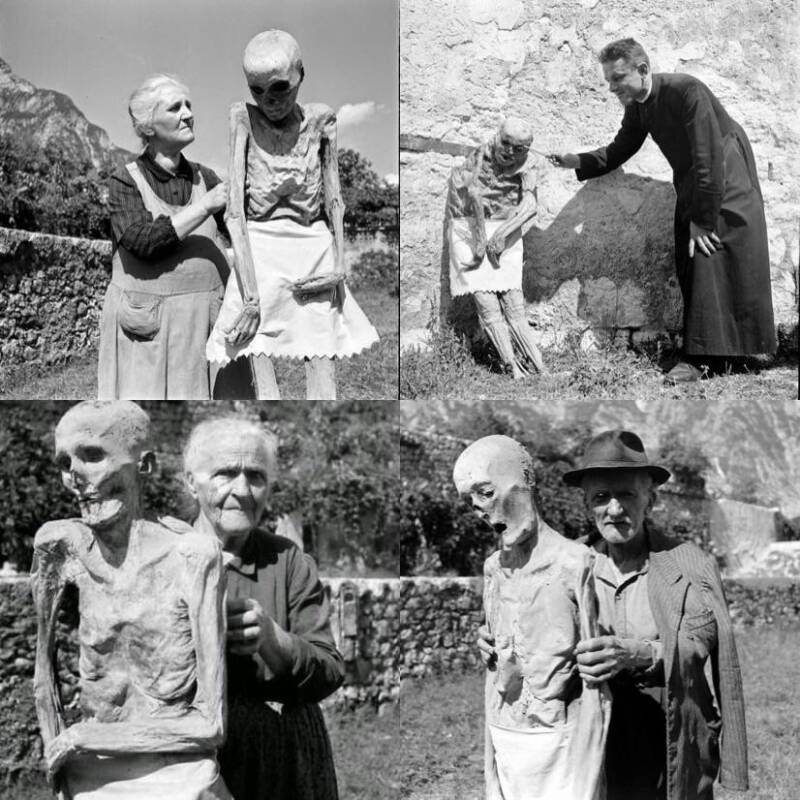
In 1647, workers working in the cathedral of Venezuela, Italy, found the body of a man in a tomb in the churchyard. The man’s body was dry and wrinkled, and he weighed less than 15 kg. After discovering this man’s body, other bodies were found in the following decades and centuries that amazed the locals and experts with their natural embalming. Many experts believed that a fungus was responsible for keeping these bodies healthy in the early twentieth century. However, newer theories have suggested that the specific water and soil conditions of the region are involved.
It is The shock of a military explosion during World War I.

Before the shock of an explosion can be called “war psychosis” or “post-traumatic stress disorder,” and before experts realize the psychological damage caused by war, World War I veterans must essentially think for themselves about their mental health problems. They did. The horrific historical photo you see shows a lousy soldier who was shocked by the explosion. In this photo, especially in the soldier’s disbelieving eyes, you can see the horror of war. This photo was taken in September 1916 in a stronghold during the Feller-Corlett battle. It was still a few years before the end of the war, and it is conceivable that countless other soldiers suffered the same fate.
Rothschild Surrealist Dance Party

The Rothschild Surreal Dance Party, held in 1972, is undoubtedly one of the strangest dance parties in history. The extravagant decoration of the party venue and the vivid and sometimes terrifying guests’ costumes on top of each other made the Rothschild surreal dance party atmosphere frightening enough even for those who attended. There have been many bizarre conspiracy theories surrounding the Rothschild family for centuries, and many believe that the German banker family is even waging war for their interests and control of world wealth, even around the world.
It does not matter how accurate the rumors are, but the surrealist ballroom held by Baroness Marie-Helen de Rothschild in Chateau-Ferres, France, fueled new conspiracy theories. The party was also attended by celebrities, including Salvador Dali, a famous surrealist painter, and Audrey Hepburn, a famous actress. She craved incredible food and snacks, including a dessert made in the form of a naked woman. [See the full photo gallery of the Rothschild Surrealist Dance Party here .]
Nanjing Massacre
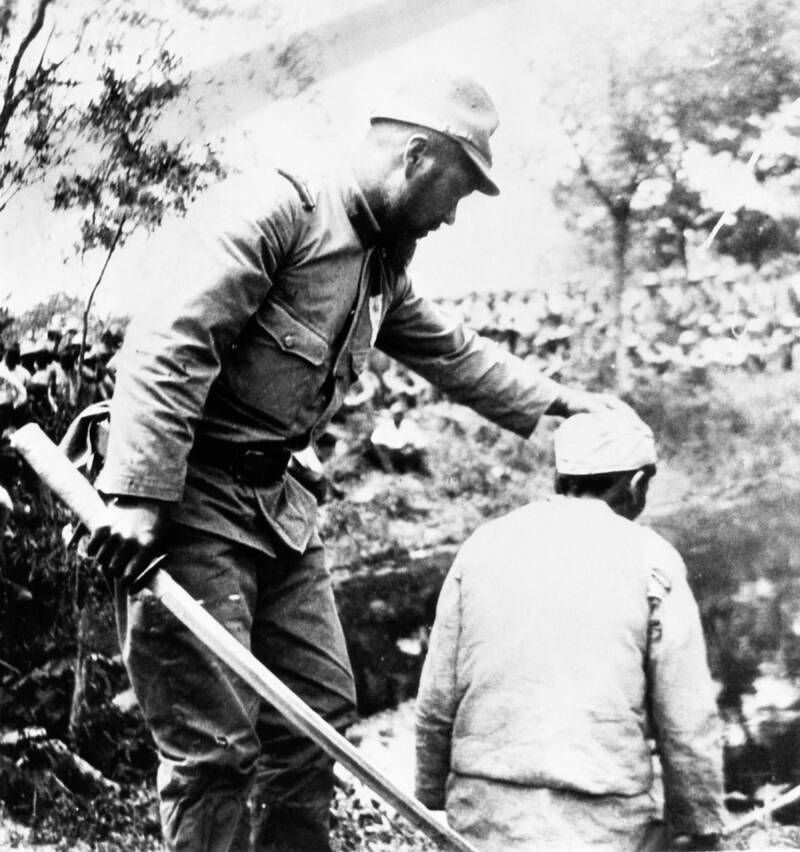
The myriad atrocities committed in Asia before and during World War II can go as far as what is known as the “Nanjing Murder or Rape.” This horrific massacre took place in December 1937, and within a few weeks, Japanese forces invaded the city in China, raping about 80,000 people and killing more than 350,000. Beheading by the samurai katana sword (as you can see in the picture) was common during these bloody events. Even during this brutal massacre, two Japanese soldiers competed to see which one could kill 100 people with a sword sooner, and Japanese newspapers covered the story like sports matches. [See more photos of the Nanjing massacre here .]
The Last Victim of “Butcher Jack”
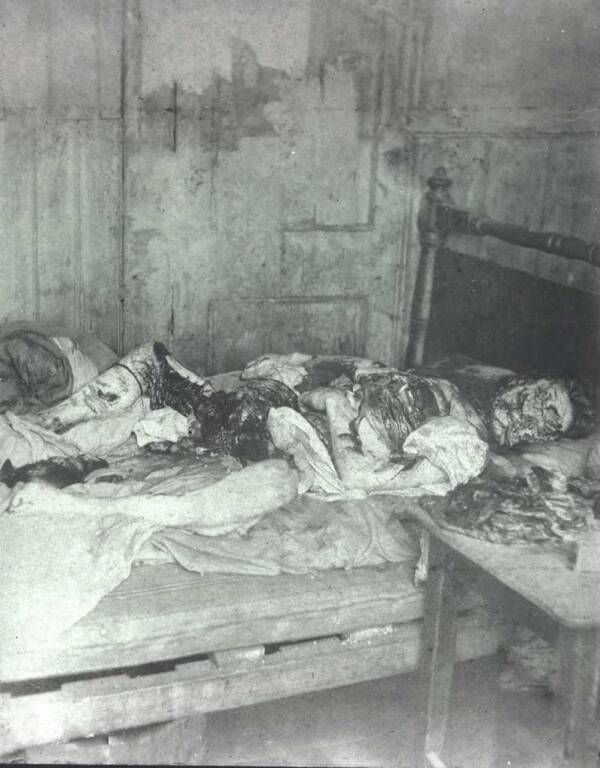
The last victim of the butcher, Jack’s infamous serial killer, was Mary Jane Kelly, whose dismembered body was found on November 9, 1888. He was confronted with this heartbreaking scene when the border entered Mary Jane’s room to make her rent. Mary Jane, a 25-year-old prostitute who was just a few months pregnant, is the youngest victim of Jack the Ripper. Another difference between the murder of Mary Jane and other crimes of Jack the Butcher is the high rate of slaughter of the victim’s body, which is not comparable to other victims at all.
Jack cut Mary Jane in the head after slashing her throat and completely shattered it. The victim’s left hand was also wholly separated from his body. His nose, forehead, and legs also turn off, and his bones protrude from the flesh. The condition of the internal organs and joints was even worse, including the liver of the esophagus that came out of his body and fell on his feet. Given that there were no signs of conflict, Mary Jane probably killed in her sleep.
The disappearance of Tara Calico

It was on September 20, 1988, that Tara Calico disappeared forever. The 19-year-old had left her home in New Mexico to get on her daily bike ride and never returned. Before leaving, he jokingly told his mother that he would follow her if he did not return. To this day, no one knows Tara’s fate. But in June 1989, a mysterious photograph found in a Florida parking lot (2,400 km away from where Tara Calico had disappeared) showed Tara Calico.
Although the photo is not confirmed, many believe that the girl is Tara, based on the wounds and a cover of Virginia C. Andrews’ “Dear Adrina” (Tara Calico’s favorite book). In the photo, a young boy (whose identity has never been determined) is seen next to Tara, with both hands and feet tied, and it is clear from the frightened eyes of both that they are waiting for a bitter fate.
Vladimir Dimokhov’s double dog
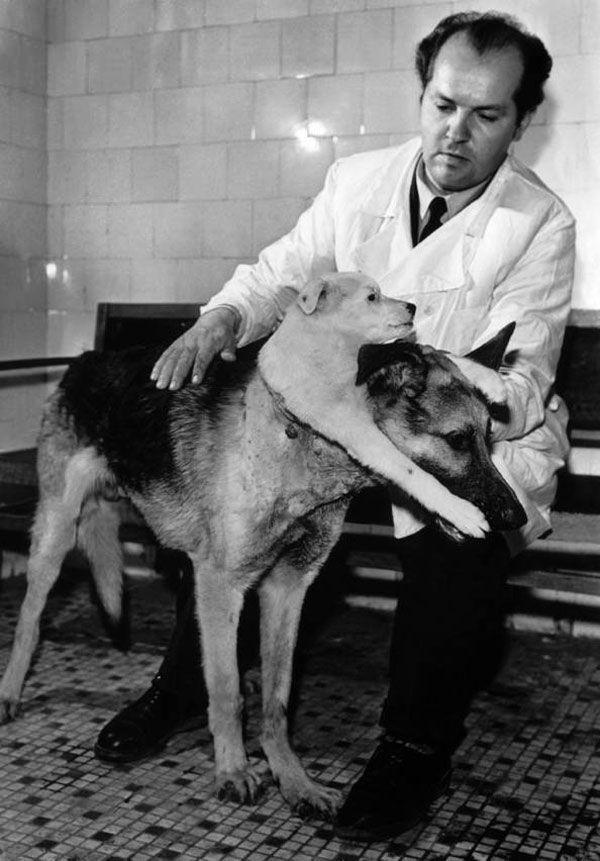
Probably no one is better than the Soviet scientist Vladimir Demikhov, the objective embodiment of a mad scientist. In 1954, this mad scientist created the world’s first two-headed dog in his dreaded laboratory. Here you will see a German Shepherd dog as the host and a smaller dog on his neck that have merged. Both dogs were surprisingly able to hear, see, smell and eat food. Unfortunately, both animals survived only four days.
The latest group photo of the Lawson family
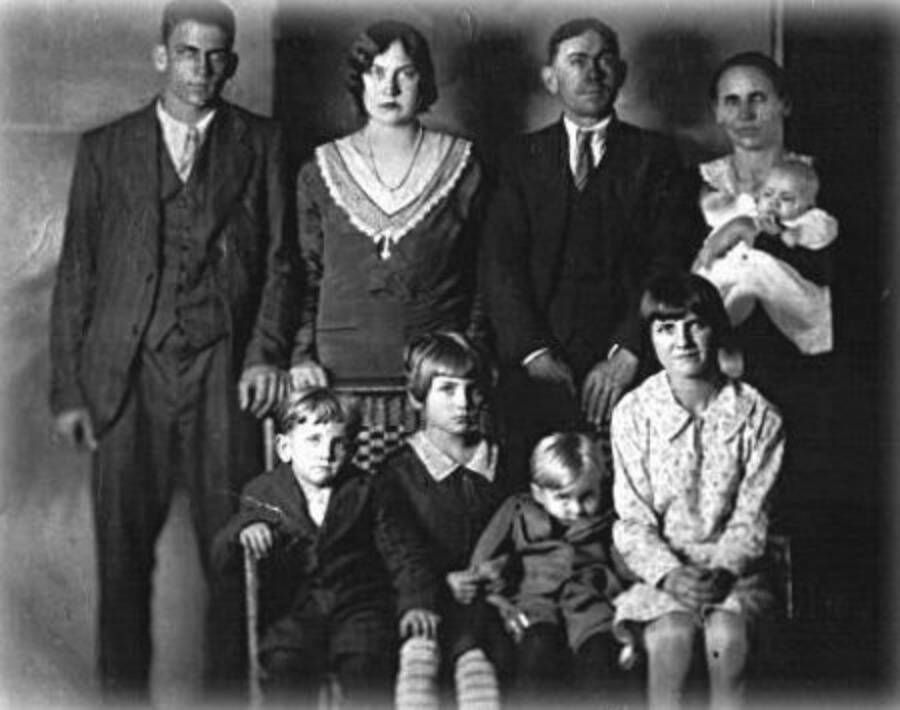
This photo, which looks like any other family photo, is the last photo left of the Lawson family. Charlie Lawson (the man standing to the right) killed everyone in the picture two days before Christmas 1929. The only survivor was 16-year-old Arthur (left), whom Charlie sent out shortly before the massacre to send a message.
Victorian portrait of death
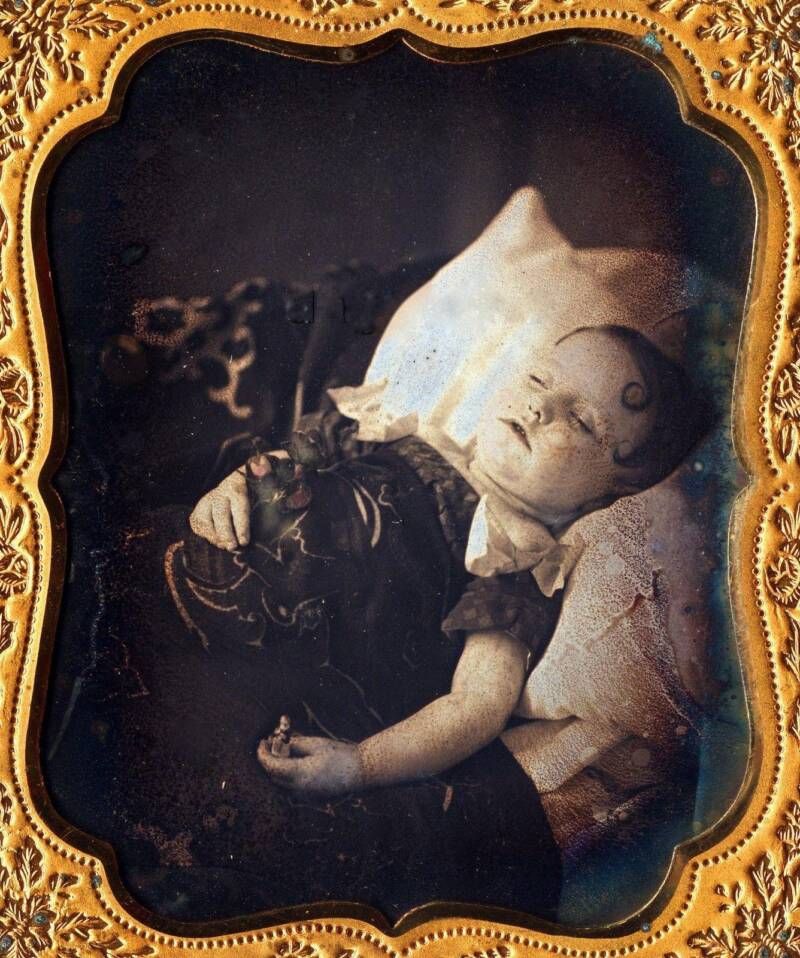
There was a fascinating tradition in the Victorian era (the 63-year reign of Queen Victoria from 1837 to 1901). At that time, the bereaved relatives took a picture of his deceased loved one before his eternal farewell to remember him forever. Although this custom may be strange and surprising to today’s people, the portrait of death was ubiquitous in the Victorian period. There are many portraits of dying from that period, some of which are very sad. For example, a photograph you see of a boy in 1855 shows him in a portrait of his death with a bouquet and his favorite toy.
Killer Torres Cleveland
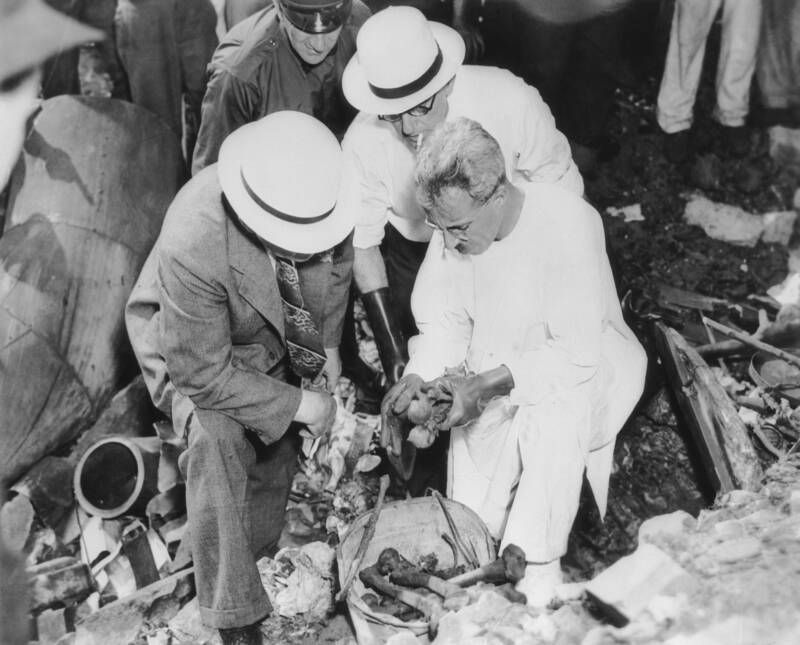
The killer of Torso Cleveland, also known as the “Crazy Butcher of Kingsburyran,” was an extraordinarily ruthless killer who killed, castrated, and dismembered at least 12 people between 1935 and 1938. Here you will find detectives and forensic experts examining the bodies of two victims on August 16, 1938. In the world before Ed Gain or Ted Bundy, these heinous crimes shocked the American people, especially since the law never caught the killer.
Maori heads

Long before the arrival of European colonizers in New Zealand, Maori natives kept severed heads as booty. These heads, called “mokumokai,” were boiled, smoked, dried in the sun, finally dipped in shark oil, and then added to the tribe’s booty. But when the British invaded New Zealand during the 1840s, they plundered the Mokomokai. Maj. Gen. Horatio Gordon Rubley (seen in this old and terrifying picture with his precious collection) is deeply fascinated by Maurice and Maurice in the “territorial or Maori wars” between 1845 and 1872 between the New Zealand colonial government and the Maori and their allies. He took 35 heads with him to his house.
Radium girls

Hundreds of young girls and women working in American watch factories in the 1920s were so exposed to radium that they sometimes returned home at night and glowed in the dark. Prolonged exposure to radium, which is used in the bright colors of watches, causes the vertebrae to disintegrate, causing swelling and looseness of the jaw and eventually cancer.
The mummified body of Manfred Fritz Biwrat
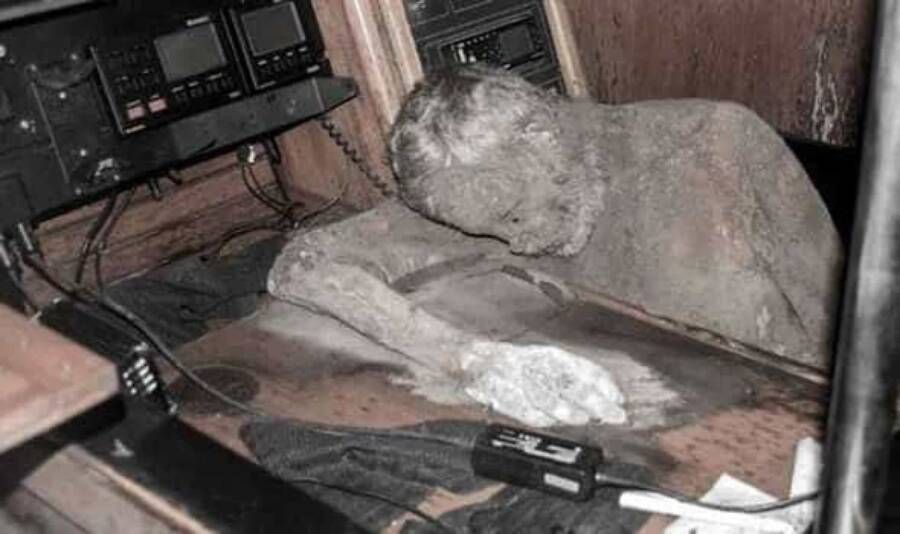
On February 25, 2016, Filipino fishers boarded an abandoned boat and discovered a mysterious body. Various documents eventually led to the identification of Manfred Fritz Biorat, an experienced German sailor. He was at his desk, apparently dying while trying to use the radio and asking for help. To this day, little is known about how he died and how he was naturally mummified.
The tragic death of Omayara Sanchez

On November 13, 1985, the Nevado del Rosie volcano erupted in the Andes Mountains of Colombia, engulfing a devastating torrent of Armero village and knocking down a 13-year-old girl named Omayara Sanchez. The poor girl paddled under the rubble when rescuers arrived and pulled her head and hands out of the water. But they could not do much to pull out his lower torso. Omayara Sanchez remained underwater for 60 hours, slowly dying of gangrene and frostbite in front of terrified rescuers. It was just before his death that a photographer named Frank Fournier took this fantastic photo of him. “I felt helpless in the face of this little girl who faced death with such courage and dignity,” Fournier later recalled.
Joachim Kroll, cannibal Ruhr
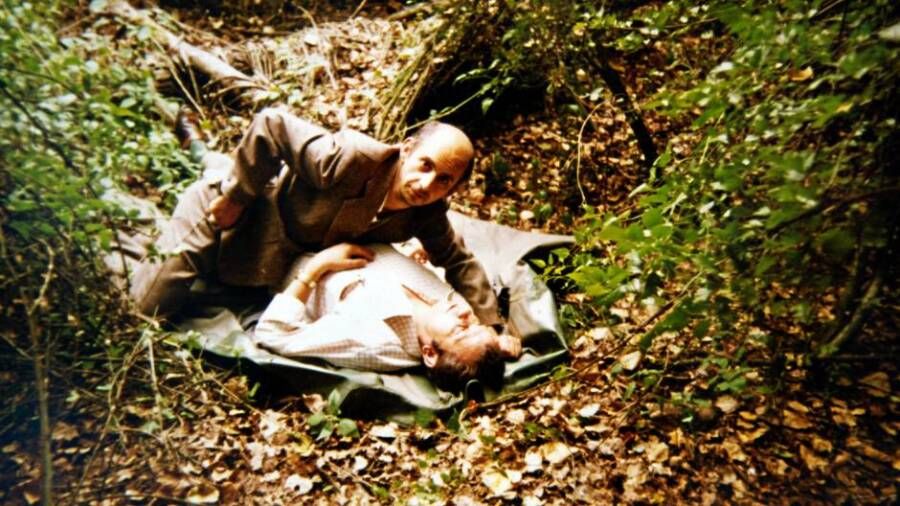
Joachim Kroll, the German serial killer in 1955, finally succumbed to his horrific demands and continued his brutal assassinations for two decades. Kroll, nicknamed the “Rohr Cannibal,” killed at least 14 people, most of whom ranged from 4 to 61. His favorite method was to suffocate the victims first and satisfy his deadly instincts (primarily sexual intercourse with corpses). He then cuts and eats pieces of the victims’ meat.
In 1976, police arrested him after finding out that the cause of the clogged sewer pipes in the apartment where he lived was the intestines of one of the victims. In this photo, taken shortly after his arrest, Kroll recreates the scene of one of his murders for police officers.
The soul of the boy Amity Will
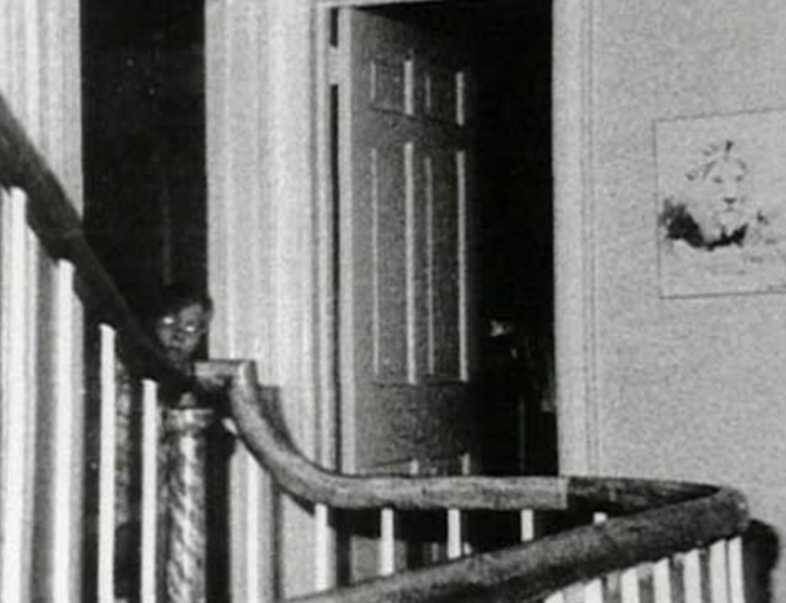
This scary photo taken in 1976 at the Amityville Horror House is one of the terrifying supernatural photos in history. After the murder of Ronald Defoe Jr. (who killed all six members of his family), the next owner of the house, George Lutz, the house had been occupied and asked Ed and Lauren Warren, famous paranormal researchers, for help.
The camera was installed on the house’s second floor when he suddenly showed his boy to the camera. Some believe that what we see in the picture is the ghost of John Difeo, Ronald’s 9-year-old brother, who was killed by his brother years ago.











